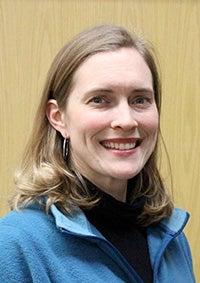My Point of View: Comprehensive sex ed arms students with facts
Published 7:07 pm Monday, May 6, 2019
My Point of View by Jennifer Vogt-Erickson

Jennifer Vogt-Erickson
Let’s give our kids the facts.
The Minnesota House is considering comprehensive sex education legislation that would mandate age-appropriate curriculum for students starting at the preschool level. It would require public schools to teach the following areas:
• Human anatomy, reproduction and sexual development
• Consent, bodily autonomy, and healthy relationships, including relationships involving diverse sexual orientations and gender identities
• Abstinence and other methods for preventing unintended pregnancy and sexually transmitted infections (STIs)
• The relationship between substance abuse and sexual behavior and health
This is similar to curriculum I was taught 30 years ago, except it doesn’t focus exclusively on heterosexual relationships. This, along with Planned Parenthood’s influence on the legislation (which was introduced by a pastor), may be what offends legislators who oppose it.
Rep. Bennett recently spoke against the legislation in a floor speech. She referred frequently to the sample curriculum, a book called “It’s Perfectly Normal,” which was first published in 1994.
She said that parents would agree, “The biology of sex education, yep, that should be taught in schools.” But she stated, “What’s in here ‘It’s Perfectly Normal’ would be considered pornography anywhere else outside of this.”
Unless it’s strictly ovum-meets-sperm divorced from other information, biology is the most graphic part of sex education. Fortunately, “It’s Perfectly Normal” handles the eyebrow-raising aspects well. It’s drawn with cartoon figures that are comical, not erotic, and it isn’t gratuitous.
The book, in print for 25 years, has received numerous accolades. Publisher’s Weekly and School Library Journal both awarded it “Best Book of the Year” and the American Library Association named it a “Notable Book of the Year.”
After researching it, I decided to order the book myself. It’s recommended for ages 10 and up. Some practical advice in the online reviews is to check safety settings on home computers because children may search terms they learn in the book. (Good advice for parents in any case.)
Bennett has a different view: “When I look at sample curriculums like this, this isn’t sex education, this is sex grooming.”
Sex grooming is a serious threat to many children and adolescents. The mandates of this legislation are specifically meant to help students and parents recognize when grooming is taking place. Calling “It’s Perfectly Natural” “sex grooming” is a fearful misuse of the term.
Bennett pointed out that if parents in a school district are adamantly opposed to this book, districts could use a different curriculum as long as it met the legislation’s criteria. So the book isn’t necessarily the issue!
The real problem with the mandates is that it offends the values of certain groups. As Bennett said, “It normalizes things that not every parent believes should be normalized.”
This could be an argument against any sex education except for abstinence only. It could also be opposition to curriculum that includes LGBTQ students.
STIs aren’t exclusive to heterosexual relationships, so to educate students about how these diseases spread, we can’t limit curriculum to female-male scenarios. For example, gonorrhea is transmitted through sexual contact with an infected person involving the penis, vagina, anus or mouth. All of it is “the biology of sex education.”
Not so long ago, it was “normalized” that students who were LGBTQ — or merely suspected of being so — lived in fear for their physical safety. Living ‘in the closet,’ conversion therapy, and sometimes even choosing suicide were “normalized” instead of accepting LGBTQ students as they were.
Thankfully, a sea of change has occurred in the past few decades. A few years ago, though, a young relative shared that they felt daily fear as an LGBTQ high school student in out-state Minnesota. It was heartbreaking to learn they still felt unsafe, and I’m proud of them for speaking up.
Do we fear these students living in peace and having their experience of dating normalized? Do we think education pertaining to their sexual health and ability/right to forge healthy relationships and avoid STIs should be left out of curriculum?
If districts could leave that out, what message does that send to these students? It tells them they are outside, marginal. It would continue to normalize discrimination.
Comprehensive sex education has been proven to reduce unintended pregnancies and STIs. Parents can teach their children what additional boundaries they want them to follow, but the purpose of education is to arm students with underlying facts.
Freeborn County has room to improve on these health measures. It had a fairly high rate of both chlamydia and gonorrhea in 2017. From 2010 to 2016, the rate of births to teenage girls in our county was 28 per 1,000, higher than Minnesota (17) and above Hennepin (18) and Ramsey (25) counties, according to county health rankings.
When we provide our children with comprehensive sex education, we also teach them that we value facts over fear.
Jennifer Vogt-Erickson is a member of the Freeborn County DFL Party.

